Russia’s killer drones still boast Swiss components. How come?
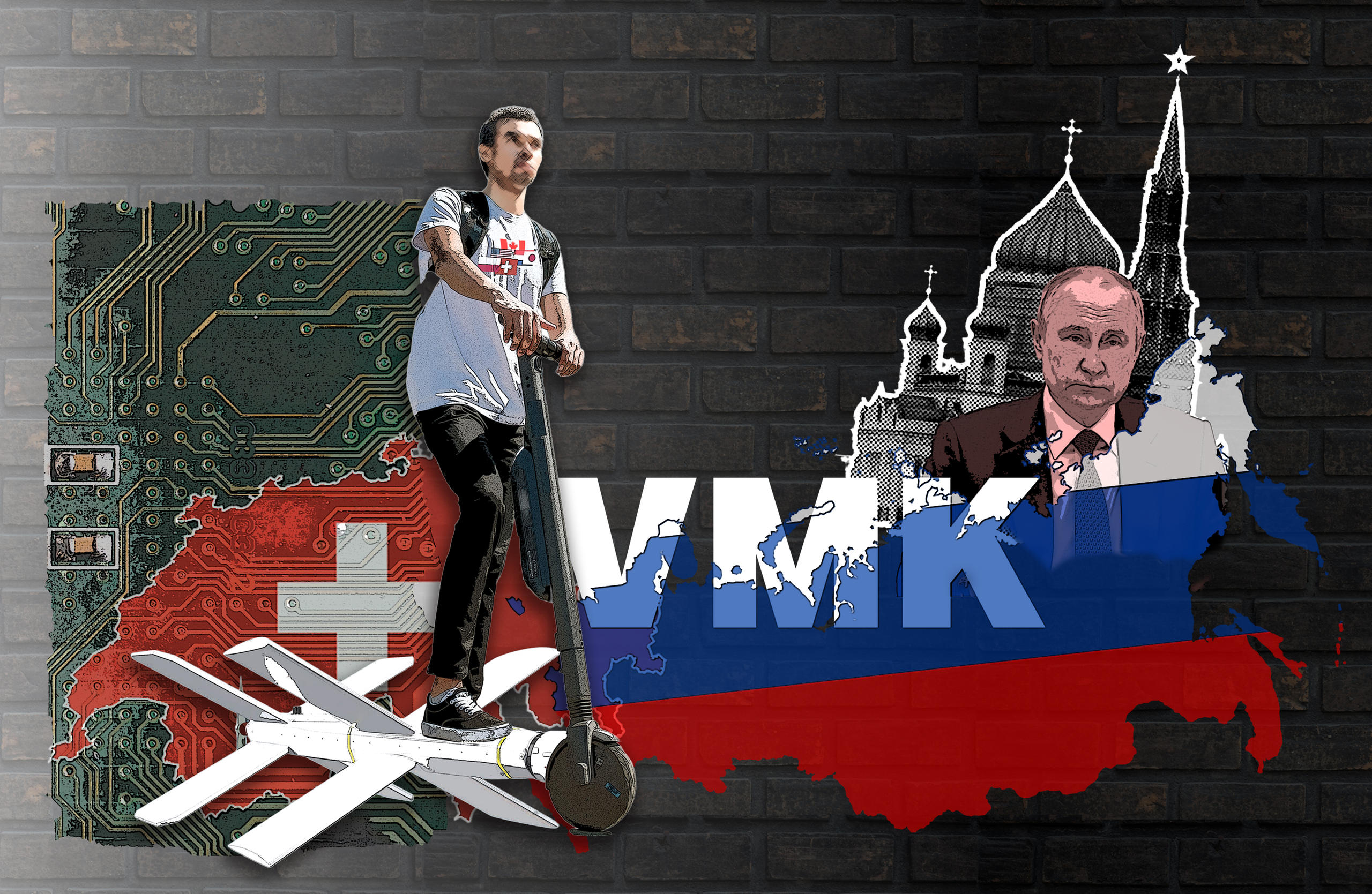
Ukrainian government documents viewed by SWI swissinfo.ch show that Swiss components made in 2023 are still embedded in Russian drones. Exclusive interviews with official Russian and Ukrainian sources unveil how that is still possible despite international sanctions.
In a photo posted on Facebook on August 16 Andriy Starukh, a Ukrainian soldier,External link appears lying on a hospital bed, his arms linked to numerous IV drips.
Bandages on his back cover the parts of his body where he was hit by shrapnel. He smiles and raises three fingers at the camera. They represent the three metres by which a Russian kamikaze drone narrowly missed him the day before.
“Yesterday was my second birthday,” he writes on that Facebook post after narrowly escaping death. “The Russian Lancet (drone) missed me by three metres, which possibly saved us.”
Russia’s invasion of Ukraine prompted a series of sanctions on Russian individuals, companies and trade by the European Union, the United States and wealthy G7 nations. Switzerland has kept in line with the EU, implementing its tenth package of sanctions in March.
That has not stopped the international community — including NGOs and more recently the G7 — from criticising Switzerland for not doing enough. They particularly point the finger at the limited amount of Russian assets frozen in Switzerland and argue the Alpine nation could do a better job enforcing sanctions.
In this series we look at what steps Switzerland has taken to conform to international standards and where it lags behind. We question the grounds for sanctions and their consequences for commodity traders based in Switzerland. We also analyse Russian assets in the country and understand how some oligarchs are navigating sanctions.
Western components – including Swiss ones – are used to make drones like the one that injured Starukh. Numerous stories of successful Russian Lancet drone attacks abound on Ukrainian social media and in the Russian press. Kyiv is pressuring its allies to do more to starve Russia of the components needed to make this lethal weapon. But Moscow is determined to ramp up their production and has proven savvy at circumventing sanctions.
The Lancet is a small drone that flies at relatively high altitudes. It is compact, stealthy, agile and hard to shoot down. Its primary function is target detection and destruction. Lancets usually work in pairs. A first reconnaissance drone detects the target. The Lancet is then launched to destroy it. With a reported price tag of $35,000 (CHF31,500) Lancets are considered cheap, efficient and easy to handle.
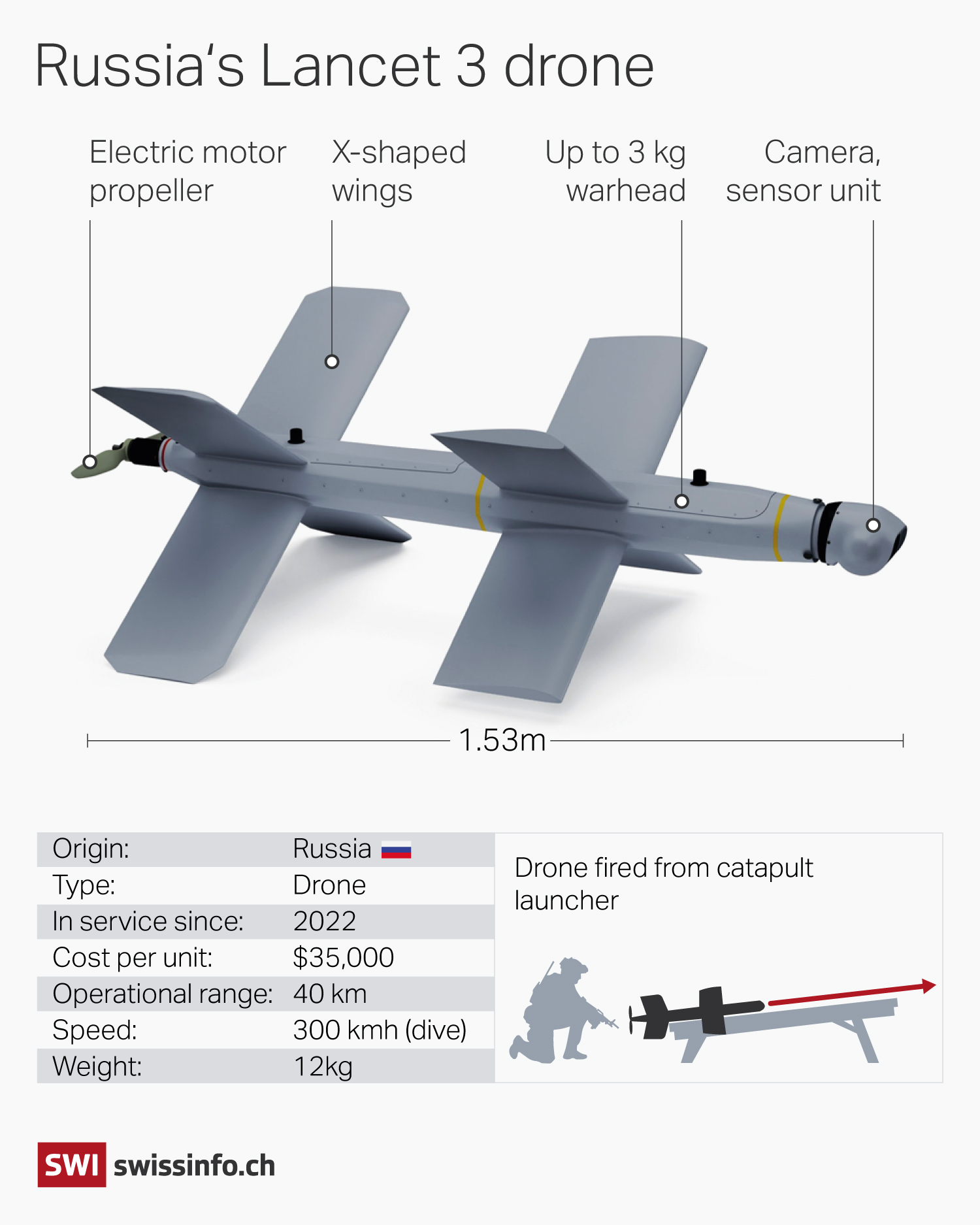
In August, Russian President Vladimir Putin ordered Rostec, a state corporation created to assist in the development and production of civil and military products, to boost their production. Putin was quoted as saying by the Kremlin External linkthat these drones have proved particularly effective in battle.
“The explosion is powerful, any equipment, including foreign-made equipment, not only burns, but also explodes,” Putin reportedly said at the meeting with Rostec boss Sergei Chemezov.
Swiss components
SWI swissinfo.ch has obtained verified documents with new information, showing that Lancet drones landing in Ukraine in June contain components from Western companies, including Swiss ones, produced this year. Russian middlemen, called fixers, as well as Russian and Ukrainian officials also provided detailed information on how Russia bypasses international sanctions and ensures Russian drones are constantly supplied with foreign components. Russian official statements to Western media are rare since the start of Moscow’s war in Ukraine.
The data shared by Ukrainian sources in August was exclusively viewed by SWI swissinfo.ch. While media reports have already pointed to the use of Swiss-manufactured chips in Russian drones, notably the Lancet and similarly efficient Orlan or Shahed drones, what is new is that data shows that some of these chips were produced in 2023. And this despite efforts by both the companies and the Swiss government to end all exports of these chips to Russia or third countries re-exporting them.
During our analysis of the documents, SWI swissinfo.ch found that at least 19 foreign-made electronic components were identified in Lancet drones. The two Swiss companies identified in the document were STMicroelectronics and u-blox. Both Swiss firms were previously named in other reports published by thinktanks in Ukraine and the United Kingdom.
The documents seen by SWI swissinfo.ch show that a Russian company called VMK is one of the leading suppliers of various electronic components in Russia. From January to March 2023, the company imported STMicroelectronics products into Russia for a total value of $53,500. The countries of origin listed for these products are China, Malaysia and the Philippines. The goods were shipped from Hong Kong.

Sanctions were imposed on VMK by Switzerland in August 2023 and by the United States in September 2023. The information reviewed by SWI swissinfo.ch did not specify that the specific components that VMK imported into Russia were used in the Lancet drones.
“In the process of analysing information regarding electronic components found in unmanned aerial vehicle (UAV) Lancet samples, at least 19 foreign-produced electronic components have been identified. Additionally, the use of u-blox satellite navigation modules manufactured in Switzerland has been recorded,” confirmed Oleksandr Novikov, head of the Ukrainian National Agency for the Prevention of Corruption (NACP), in an interview with SWI swissinfo.ch. Since the beginning of the war the Ukrainian agency is also in charge of identifying a sanctions list of Russian individuals and assets.
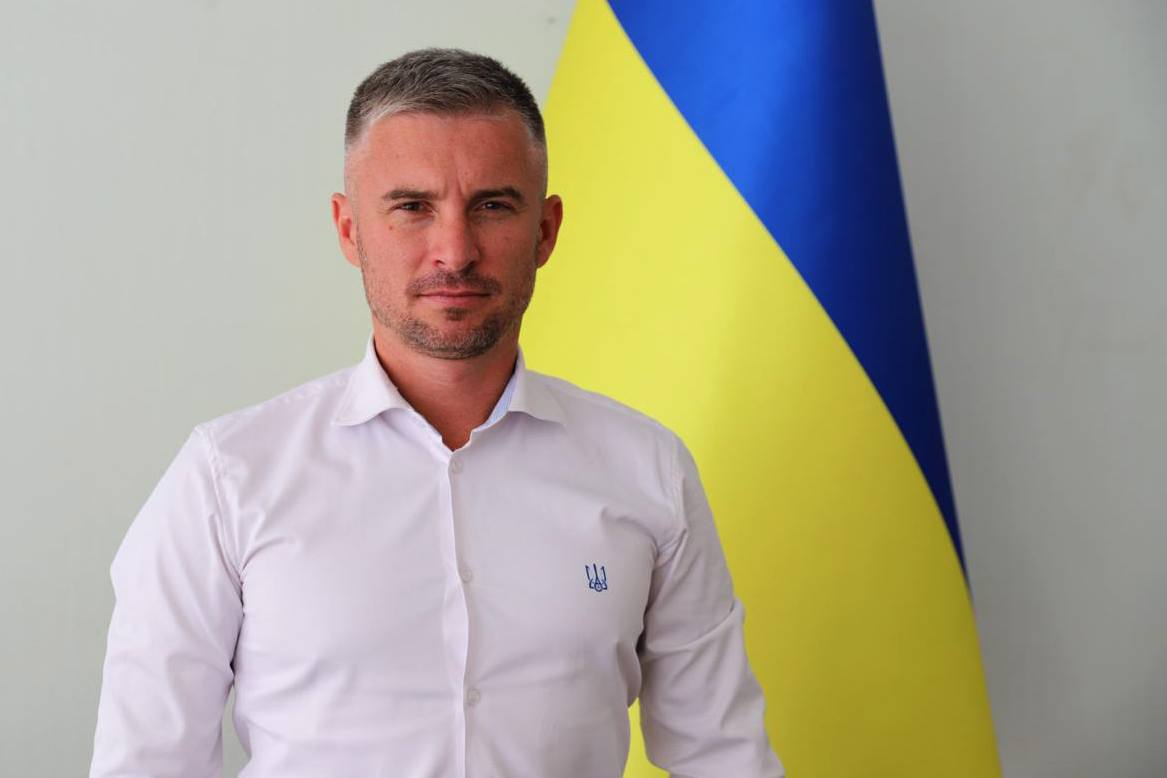
To identify the companies supplying these electronic components, NACP analysed information from various Ukrainian government sources. According to SWI swissinfo.ch’s sources, Russians are destroying evidence of where the chips originate from. They confirmed they could identify the company manufacturing the equipment thanks to special equipment. They also said analysis of trade data confirmed how these were making their way into Russia.
This raises the question of how and what companies are circumventing sanctions to sell foreign-made components to Russia. The European Union and the United States were quick to implement sanctions on Russian assets and individuals at the onset of the war. Switzerland followed suit. To prevent Russia from circumventing sanctions, Switzerland joined an 11th round implemented by the European Union in August 2023. These included a ban on the export of dual-use goods and goods contributing to Russia’s military-technical enhancement. These restrictions apply to 87 companies, including those that supplied such goods to Russia from third countries.
“There is close cooperation with the competent authorities in Ukraine, especially for the identification of the components found,” Jürgen Boehler-Marcano from the State Secretariat for Economic Affairs (SECO)External link, a division of the country’s economics ministry, told SWI swissinfo.ch in an interview.
Until recently, investigations had determined that the components found had been acquired by Russia or Iran before February 2022. However, SECO confirmed that Swiss components likely made it into Russia this year as well. “This does not come as a surprise given Russia’s huge needs to produce new weapons,” Boehler-Marcano said.

Drone Warfare
Ukraine in August presented a 47-page document to the G7 countries, stating that over the past three months, more than 600 drone attacks on Ukrainian cities had been conducted using drones containing Western components. Among the component manufacturers were countries within the sanction coalition, including Switzerland, the US, the Netherlands, Poland, Canada and Japan.
A report published in August by the Kyiv School of EconomicsExternal link, a thinktank, shows that trade volume of foreign components used in Russian drones was up 19% from January to May 2023 compared with the same period in 2022.
“It is necessary to completely halt the identified components not only to Russia but also in jurisdictions of high risk. Manufacturers should be held accountable if they continue to supply goods to Russia themselves and sanctions should be imposed on those companies that help supply these elements in circumvention of sanctions,” said Novikov, the head of the Ukrainian National Agency for the Prevention of Corruption in reaction to the findings.
Both Swiss companies identified by Ukrainian government sources condemn the use of their parts in Russia warfare. SWI swissinfo.ch has not found clear evidence of sanctions violations by these companies. “Since the end of February 2022, we have taken actions to comply with the specific requirements of multiple sanction packages and export control measures implemented by the European Union, the United States and partnering countries against Russia and Belarus,” STMicroelectronics said in a written email.
“Immediately after Russia’s invasion of Ukraine in February 2022, u-blox stopped all sales to Russia, Belarus and the territories occupied by the Russian army in Ukraine, irrespective of the intended use. Recently, u-blox has also decided not to sell to members of the Eurasian Economic Union (a free trade zone with Russia)”, the company said in a general statement.
“As to how u-blox components have been found in drones used by Russian forces, we can provide the following assumptions, respectively explanations: either these components were purchased before sanctions were in place; or excess inventory was sold on by customers to brokers in countries not applying sanctions against Russia and then shipped into Russia; or smuggled into Russia; or they have been de-mounted from an end product and re-integrated into Russian drones”, the company added.
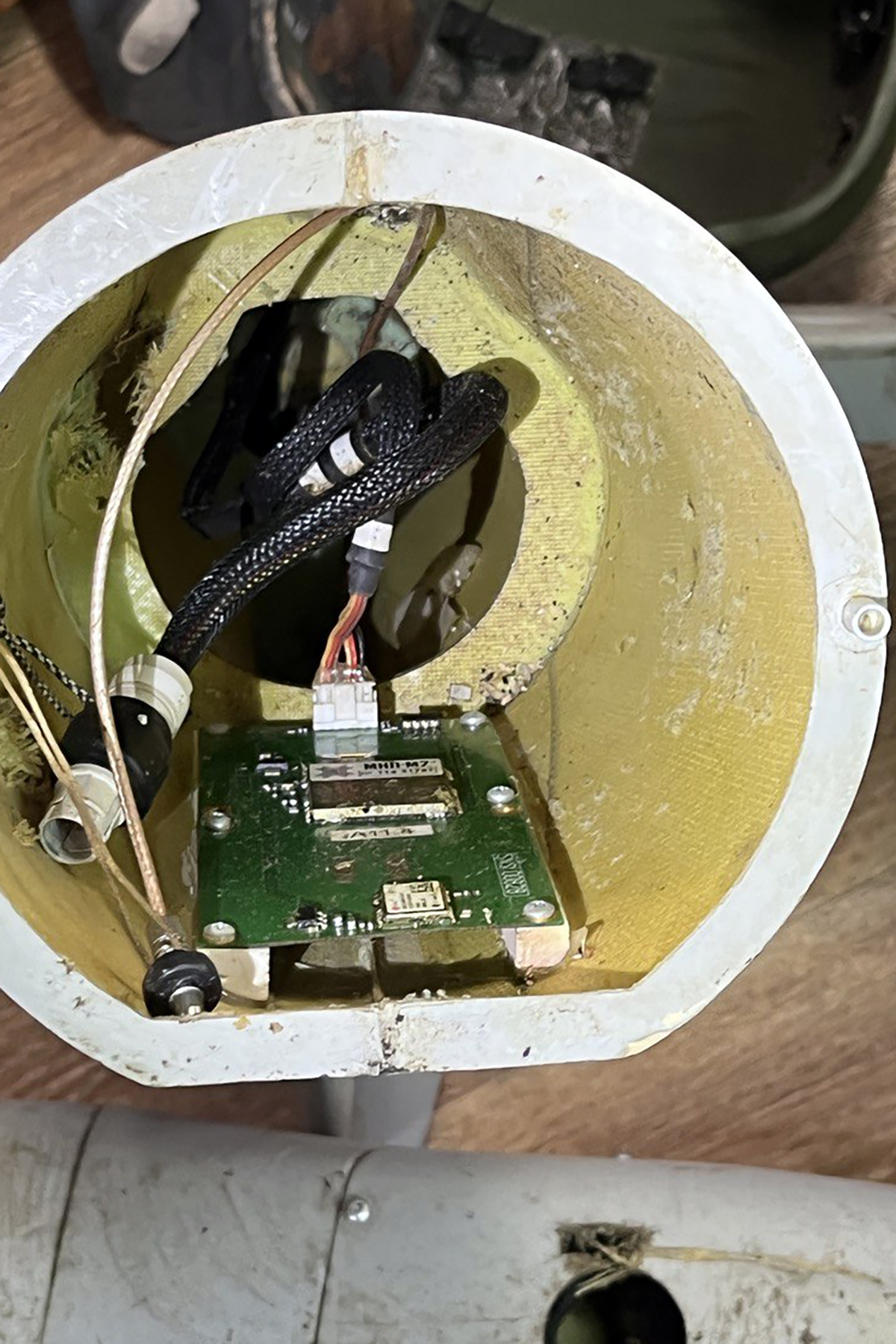
Chips used in Lancet drones can be found in daily consumer goods such as e-scooters, e-bikes, cars, toys or in construction machines. They can easily be extracted from these products and resold on a secondary market. These chips are not classified as military equipment and their exports were in no way regulated before the war. They are embedded in the drone and enable navigation.
The simplicity of their use and sheer number already in the market means it’s near impossible for companies to track what happens to their chips once they are sold to a third party.
“There’s not much that can be done. The technology used in these drones is widespread outside the realm of military control. You can set up systems, but control is only feasible for the distribution of really complex and expensive systems. However, the chip [ST Microelectronics] that Ukrainian media write about, is readily available on the market. I looked on the Chinese e-commerce website Alibaba yesterday, and it can be ordered for $250”, said Valery Shiryayev a military expert with the independent Russian newspaper Novaya GazetaExternal link. “The production of Lancets doesn’t require precision machinery”.

More
Swiss chips not vital to Lancet drone production: Russia military expert
The simplicity of the technology is what makes these drones so efficient. The drones can identify targets and strike with precision. They are light – 12kg – and capable of speeds of 110-120 km/h.
Unlike similar drones produced by the United States or Ukraine such as the Switchblade 600 the Lancet, as its manufacturer openly states, does not rely on satellite control as satellite signals can easily be jammed in wartime. This means it can’t be misled and prevented from reaching its targets. The map and direction are directly uploaded into the drone before its flight. “When the Lancet flies at incredible speeds over the surface, its camera constantly matches the presence of various reference points on the ground with the map. It navigates based on the terrain. In simpler terms, it’s like what a person does when flying on a plane. You could blow up all the satellites, and it wouldn’t make a difference to the Lancet,” explains Shiryayev.
Their efficiency has become a headache for the Ukrainian army. The Switchblade 600 for instance is heavier and slower than the Lancet. And it can’t down enemy drones unlike its Russian competitor.
“Our biggest problem is that when it comes to operational-tactical-class unmanned systems, the Russians are far ahead of us. (…) I’m primarily talking about the Orlan because it’s a significant problem for us,” said Andriy Biletsky, commander of the Third Assault Brigade, founder of the Azov regiment, and former member of parliament in an October interview with the Ukrainian newspaper Ukrainska Pravda. External link
“The second problem is the Lancet, which they actively use, and as of now, we haven’t found effective countermeasures for it,” he added. “The vast majority of artillery systems are vulnerable to the Lancet.”
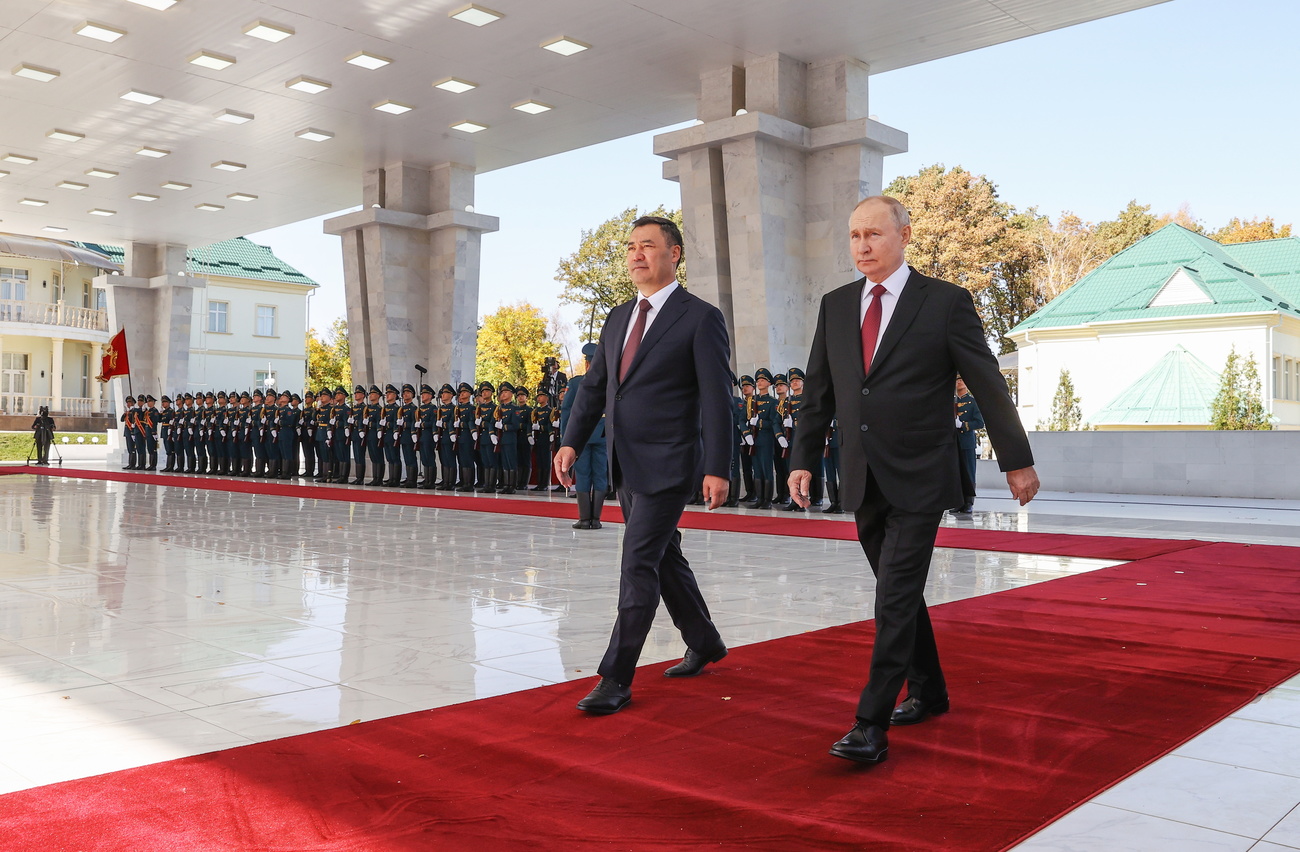
Parallel systems
In Russia, entire industries, government agencies and criminal circles are dedicated to circumventing bans and sanctions to make sure a steady flow of these components continues to enter the country. These work with a network of exporters and traders set up just to respond to Russian demand.
“Russia constantly takes measures to circumvent sanctions restrictions,” says a Ukrainian source. “This situation is even more complex due to the emergence of new companies specialising in the supply of electronic components and the expansion of activities of companies that were not previously involved in supplying these components.”
This is confirmed by the Kyiv School of Economics report which points to a whole framework of illegal networks, fake customs data, one-day shell companies, intermediary entities and suppliers all orchestrating fake transit operations. “These strategies exemplify Russia’s adaptive response to sanctions, utilising multifaceted channels and actors to evade sanctions frameworks”, the report stated.
There is not a one-way route for chips to enter Russia. In most cases, Russian intermediaries liaise with emigrants from former Soviet republics who work in Western companies. Documents viewed by SWI swissinfo.ch show that sanctioned goods transition through trade companies registered mostly in Turkey or China. They can then be either shipped directly to Russia or resold to agents in countries such as Kazakhstan or Kyrgyzstan that have close links to Russia, Ukrainian sources close to the government told SWI swissinfo.ch.
In Russian slang these agents and intermediaries are called solvers or fixers. They are in charge of resolving import restrictions linked to sanctions and liaising with the Russian Federal Security Service (FSB) and the prosecutor’s office. The price for resolving a sanctions-related matter – whether for federal officials or businessmen – depends on the value of the imported product, but typically it’s one and a half times higher, and usually, a third of that amount goes to the solver.
“Bringing Western sanctioned goods into Russia through Turkey doesn’t cost anything. Previously, you could do it through Kazakhstan, but that route is closed now,” said a fixer who spoke to SWI swissinfo.ch on condition of anonymity. He works on sourcing merchandise directly for Russian ministries.
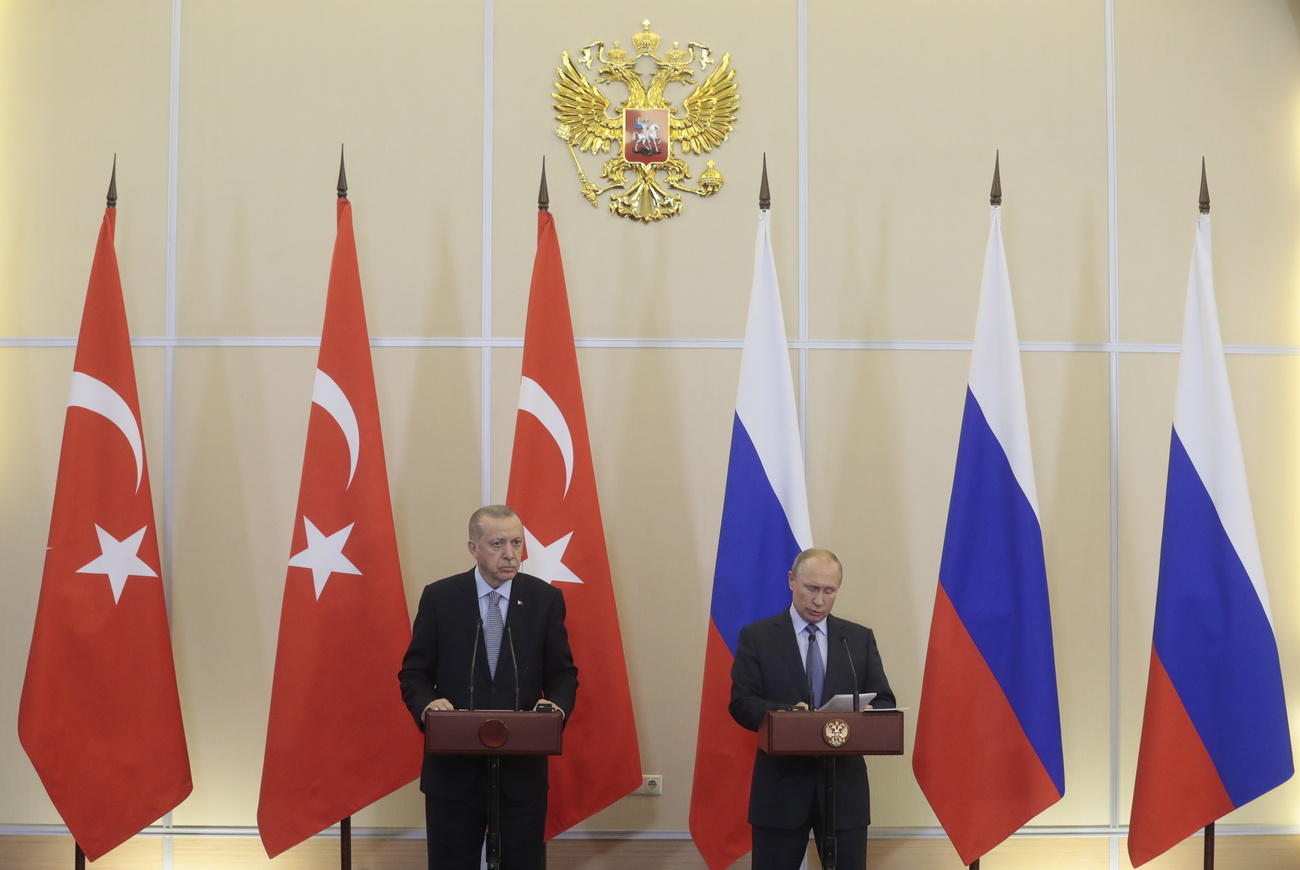
He also cites as an example how foreign-made trucks are imported to Russia via the United Arab Emirates thanks to companies linked to Russia: “Trucks are first purchased in the Emirates without heating. Otherwise, it would be immediately obvious that this product is going to a cold country,” he explains. “After the Emirates, the equipment is sent to Iran, where heaters are installed, and then it’s shipped to Russia. Everyone in this chain makes a profit, and everyone is satisfied. That’s how it works!”
Those making the highest profit usually have close ties to the Kremlin. Clients are usually part of Putin’s inner circle or among the oligarchs that have remained in Russia. “They are untouchable – they do as they want,” says the Russia-based fixer.
Facts disclosed during the interview were confirmed by a high-ranking official from a Russian ministry, who also spoke on condition of anonymity. He told SWI swissinfo.ch that tight links between Russia and former Soviet republics allowed for roubles to be traded despite an international ban on trades in the Russian currency. “Companies associated with the [Russian Defense Minister Sergey] Shoigu’s circle, transport everything through Kyrgyzstan and Kazakhstan,” he said. “In Kyrgyzstan, there is a law that allows anyone born in the Soviet Union before 1991 to obtain local citizenship. There are now many Russians with Kyrgyz passports, conducting business there: they open local accounts in roubles. RosfinmonitoringExternal link (Russia’s financial watchdog) doesn’t monitor this at all; there is no regulation there.”
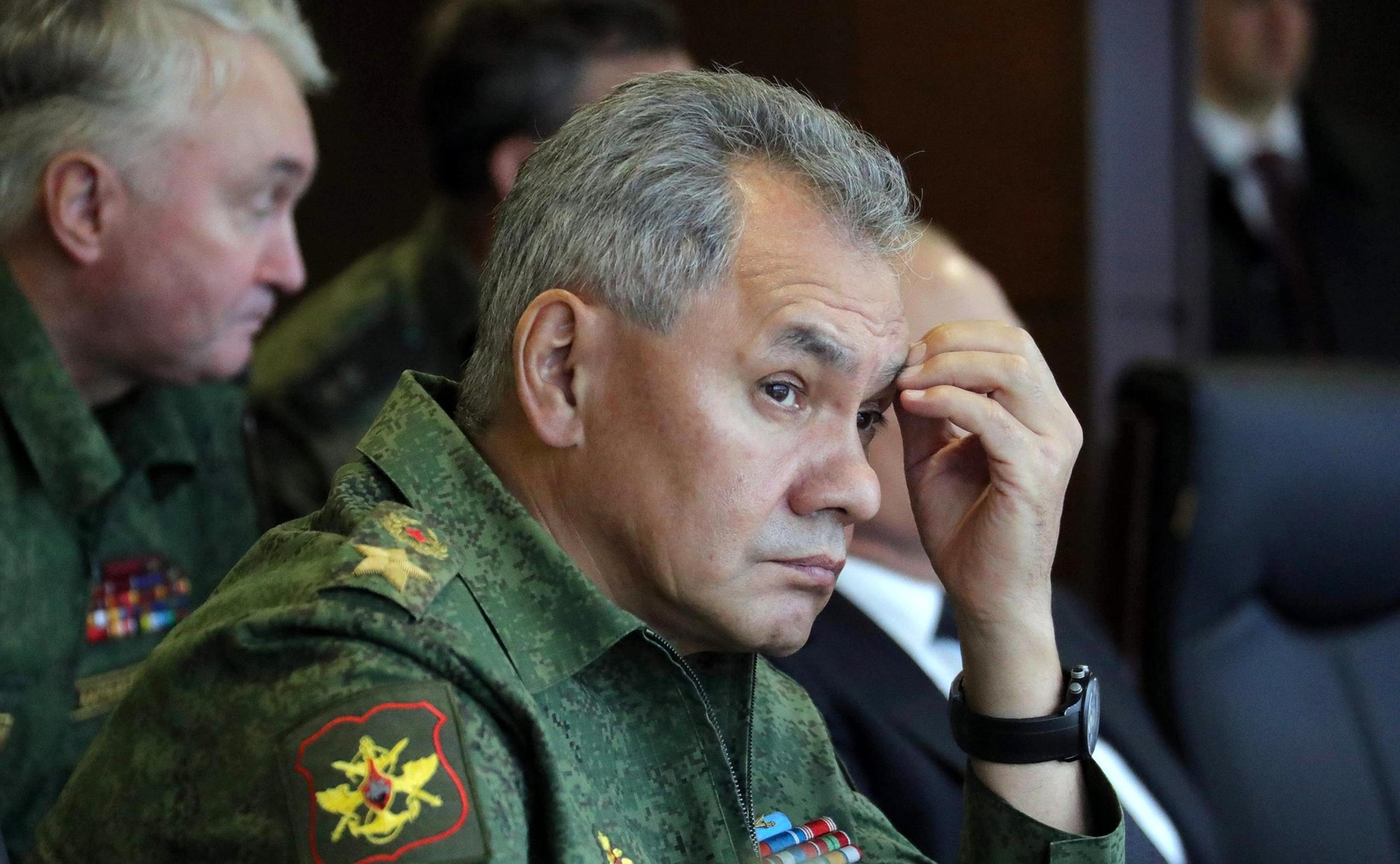
When the roubles enter Kyrgyzstan, they are converted to the local currency and transferred to the Emirates to pay for the goods. “Absolutely everyone in the chain knows what’s happening, and they all benefit from it because the Russian state is willing to pay twice as much,” the same source states. “A bribe to transport, for example, a truck for the Russian Ministry of Defense through Kazakhstan costs only $3,000. You just give a bribe, and that’s it.”
Filling the gaps?
Ukraine argues much more could be done to stop the steady flow of sanctioned goods to Russia and points the finger at Western companies and governments for being too lenient.
SECO says it has already taken a series of actions to avoid more Swiss components entering Russia. It has informed companies about suspicious foreign recipients and third countries where they are thought to transit. Deliveries to those countries have also been stopped. Switzerland also carries out stricter controls at its borders and “possible technical measures are being discussed to limit the technical capabilities of goods by Russia”, SECO said without providing more details.
The Russian company responsible for manufacturing Lancet drones since the mid-2000s is Zala Aero Group, with its main legal entity being LLC CST. The controlling owner of the company is Alexander Zakharov, and the rest is owned by the Kalashnikov Concern, which controls nearly all the production of small weapons in Russia. Zakharov, along with his wife and son, reportedlyExternal link owns an elite apartment in London worth $2 million near Buckingham Palace.
He is considered by Ukrainian authorities to be “responsible for supporting actions that undermine or threaten Ukraine”. Early November he was added to the US sanctions list.External link
Furthermore, SECO has tightened its collaboration with the Ukrainian intelligence service. Novikov, the head of the Ukrainian National Agency on Corruption Prevention, says that’s not enough and asks for more export control measures on certain Swiss components that can end up in the Lancet drones. Switzerland, for example, could only allow exports that have permits and require end-user certificates from exporters. Such certificates are typically used in the international purchase or transfer of prohibited products like explosives, firearms and ammunition.
SECO acknowledges that there is no 100% guarantee that this sector will ever be under control and that Swiss components will not end up in Russian weaponry. It says that to date on the basis of the “ordinance on Ukraine and Belarus” it has issued “six final and absolute penalty orders” and one “final and absolute penalty ruling”.
“Sanctions do work and make access to foreign components difficult for the Russian military. But chips are still entering Russia and this is enough to kill civilians and destroy infrastruture”, Ukrainian governmental sources told SWI swissinfo.ch.
Edited by Virginie Mangin/ds
Russian sources quoted in this story were contacted through the Dossier Center for Investigative JournalismExternal link, an organisation which mostly investigates on Russia. The sources have been anonymised by SWI swissinfo.ch to protect them. Dossier Center for Investigative Journalism and the reporter guarantee their authenticity. The interviews were conducted by telephone via Signal by the organisation.

In compliance with the JTI standards
More: SWI swissinfo.ch certified by the Journalism Trust Initiative
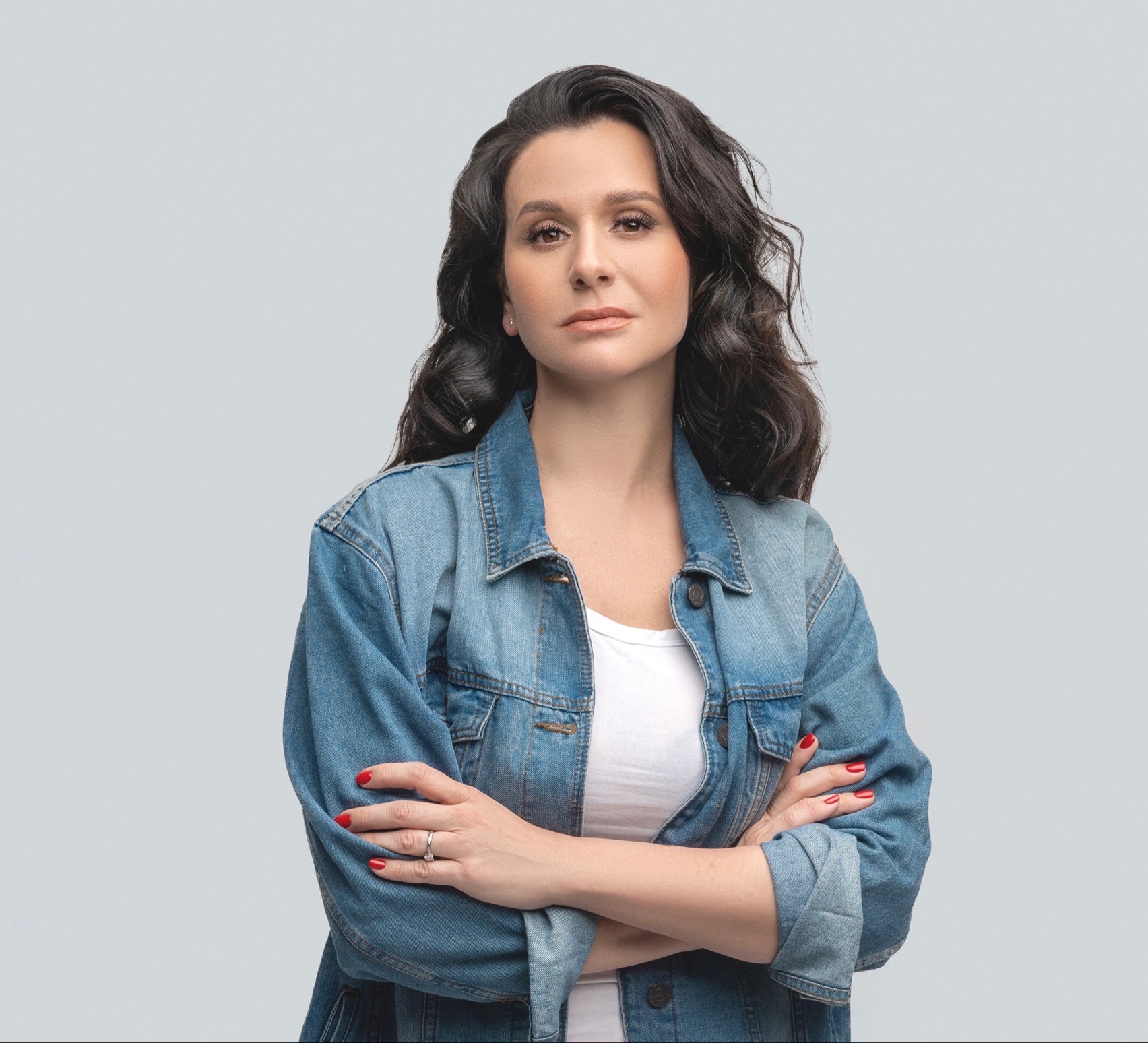








You can find an overview of ongoing debates with our journalists here . Please join us!
If you want to start a conversation about a topic raised in this article or want to report factual errors, email us at english@swissinfo.ch.